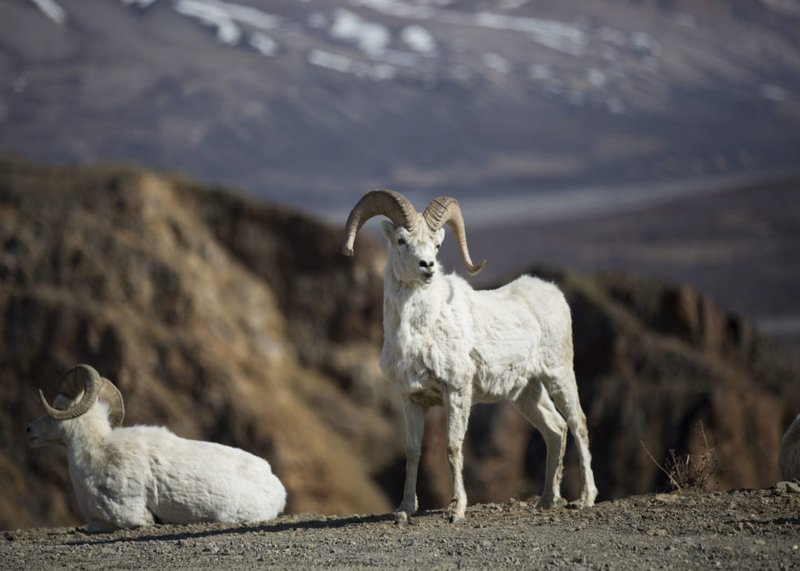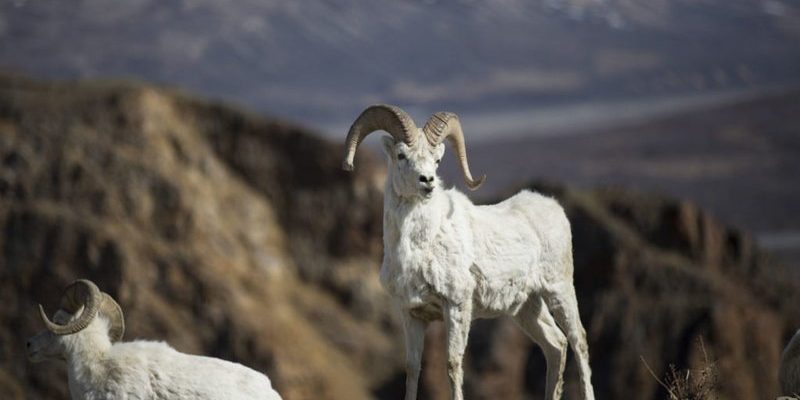
However, despite their captivating presence, there are many myths and misconceptions about Dall sheep. From their habitat preferences to their social behaviors, some of what people believe isn’t accurate at all. Let’s dive in and clear the air about these majestic animals.
Dall Sheep Are Not Endangered
One of the most common misconceptions is that Dall sheep are endangered. In reality, their populations are relatively stable, especially in protected areas like national parks. Interestingly, the Dall sheep are classified as a species of “Least Concern” by the International Union for Conservation of Nature (IUCN).
You might be wondering how this works. Well, while local populations can fluctuate due to factors like hunting or habitat loss, overall, they adapt well to their rugged environments. Conservation efforts have helped maintain healthy populations, but that doesn’t mean there aren’t challenges. Habitat encroachment and climate change can compromise their living spaces and food sources, making it essential to keep a close eye on their future.
They Are Not All White
Another myth that tends to circulate is that Dall sheep are purely white. While the males (rams) are predominantly white, the females (ewes) often feature a more varied coat. Depending on their environment, you might even spot shades of brown or gray in their wool. This variation helps them camouflage in the rocky terrain, making it a little trickier for predators to spot them.
Let’s break this down a bit. Dall sheep typically lighten as they age. Younger individuals may have slightly darker coats that can make them look like a different species altogether. So, when you see a band of Dall sheep, take a moment to appreciate the diversity in their appearance. It’s not just white!
They Don’t Only Live in Mountainous Areas
You might think Dall sheep only thrive in high altitudes and steep mountains, and while they love rocky terrain, they can be quite adaptable. They primarily inhabit alpine tundra, but they can also be found in lower elevation areas during certain times of the year.
During late spring and summer, Dall sheep often move to lush valleys to graze on grasses, wildflowers, and herbs. Just like people, they enjoy a variety of dining options! When winter sets in and food becomes scarce, they’ll return to higher elevations to find refuge from the cold. This adaptability is key to their survival in harsh environments, allowing them to thrive in different habitats.
Their Social Structure is More Complex Than You Think
Dall sheep are often seen roaming in small groups, leading some to believe they’re loners. However, they have a well-defined social structure, especially among rams and ewes. During the mating season, rams will engage in head-butting contests to establish dominance and win the attention of females.
You see, each ram has a hierarchy that influences their chances of reproduction. Younger rams might have to wait their turn, while older, larger rams often gain the privilege of mating first. Among ewes, social bonds can be crucial, often forming tight-knit groups that support each other in raising young lambs. Isn’t that a nice twist? They’re not just wandering aimlessly; there’s a method to their social madness.
Dall Sheep Are Not Just for Trophy Hunters
While hunting Dall sheep is a regulated sport in some areas, it’s crucial to understand that they’re not merely game animals. Trophy hunting can be a controversial topic, often bringing up ethical debates about conservation and population health. The reality is that hunting can be a part of wildlife management when done responsibly.
Regulated hunting licenses and seasons help ensure that populations remain sustainable. Plus, many hunters also contribute to conservation efforts, using funds from permits to support wildlife habitats. That said, it’s vital to remember that Dall sheep are fascinating creatures deserving of respect and protection, not just targets for sport.
They Don’t Have Predators Like You Would Think
Another myth revolves around the predator-prey relationship. People often assume that Dall sheep are constantly threatened by predators like wolves or bears. While they certainly are prey, their natural instincts and sharp senses help them stay safe.
When danger is near, Dall sheep use their impressive agility to escape. They can navigate rocky terrains with ease, often fleeing to steep cliffs where predators would struggle to follow. So rather than living in constant fear, they’ve evolved to handle their foes effectively. Still, humans pose a significant threat, primarily through habitat disruption and hunting.
Dall sheep are fascinating creatures that are often misunderstood. From their adaptability to their complex social structures, there’s so much more to these animals than meets the eye. By dispelling these common myths, we can appreciate their role in the ecosystem and understand the importance of conserving their habitats.
So next time you hear about Dall sheep, you’ll know that there’s a lot more to their story than just a pretty face in the mountains. Let’s celebrate these unique animals and work together to ensure they continue to thrive in the wild for generations to come.

